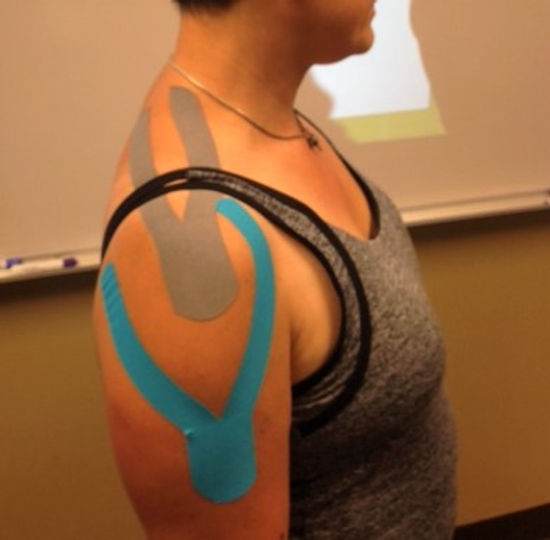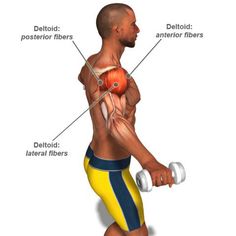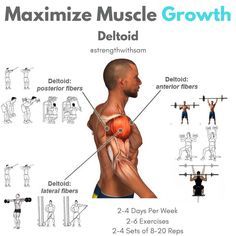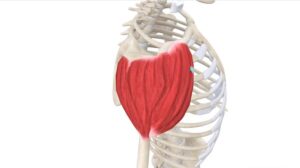

It all started with a slight discomfort in my neck, a feeling I shrugged off after long hours at the desk.
Little did I know that my poor neck posture would lead to something much more severe—a painful, nagging issue with my deltoid muscles.
You might think, “How could slumping at a computer or texting on my phone possibly hurt my shoulder muscles?”
Well, as I discovered the hard way, poor neck posture and deltoid muscle damage are more connected than we realize.
Let me take you through my story, unraveling how bad habits can lead to unintended consequences for your muscles and, more importantly, your life.
Article Index
- What Is Poor Neck Posture and Why Does It Matter?
- Understanding the Deltoid Muscle: Action, Function, and Anatomy
- How Poor Posture Affects the Deltoid Muscles
- Daily Lifestyle Choices That Contribute to Neck and Deltoid Damage
- Scientific Research Linking Neck Posture to Deltoid Muscle Pain
- My Experience: How Neck Pain Due to Bad Posture Led to Deltoid Damage
- Conclusion: How to Prevent and Manage Neck and Deltoid Muscle Pain
What Is Poor Neck Posture and Why Does It Matter?
Poor posture and neck pain often go hand in hand, especially in the digital age. When you hunch over a screen for hours, the natural curve of your neck shifts forward, creating what is often referred to as “tech neck” or “forward head posture.”
Over time, this poor alignment places excessive stress on the muscles of your neck, shoulders, and upper back.
Initially, you might only feel stiffness or minor discomfort, but as your body adjusts to the incorrect posture, more severe muscle strain can occur.
This leads to chronic pain and, in my case, damage to my deltoid muscles—something I never saw coming.
Understanding the Deltoid Muscle: Action, Function, and Anatomy
The deltoid muscle is one of the largest muscles of the shoulder and plays a critical role in arm movement.
The action of the deltoid muscle is to lift the arm and provide strength and stability to the shoulder joint.
This muscle is divided into three parts: the anterior deltoid (front), side deltoid muscle (lateral), and posterior deltoid muscle (back).
Each of these segments is responsible for different movements, such as lifting your arms to the side or rotating your shoulders.
One important feature of this muscle is its insertion point.
The deltoid muscle insertion occurs at the deltoid tuberosity of the humerus, which is the long bone in your upper arm.
When this muscle is strained or injured, simple actions like lifting objects, even as light as a coffee cup, become excruciatingly painful.
How Poor Posture Affects the Deltoid Muscles?
As my neck posture continued to worsen, the pain gradually spread to my shoulders.
Poor posture can lead to muscle imbalances, causing certain muscles to become overworked and others to weaken.
In my case, my neck misalignment strained the muscles surrounding my shoulders, including my deltoids.
When your head is constantly tilted forward, the muscles in your neck and shoulders are forced to compensate for the added stress.
Over time, this can lead to chronic tightness and even pain in the deltoid region. For me, it was the posterior deltoid muscle that took the brunt of the damage.
As I struggled with maintaining my posture, this muscle group became inflamed, resulting in constant soreness and tightness.
Daily Lifestyle Choices That Contribute to Neck and Deltoid Damage
My daily habits were not doing me any favors.
Working long hours at a desk without breaks, slumping in my chair, and scrolling through my phone for hours without considering my posture all contributed to my neck and shoulder pain.
Many people don’t realize that the way they sit or stand for hours on end can wreak havoc on their deltoid muscles.
One day, I tried lifting something heavy from an overhead shelf, and bam! The pain in my deltoid region was unbearable.
It felt like the muscle was tearing, which led me to research how poor posture could be linked to shoulder injuries.
Turns out, I was not alone—many studies suggest that bad neck posture causes compensation by surrounding muscles, which can lead to inflammation or injury.
Scientific Research Linking Neck Posture to Deltoid Muscle Pain
There is growing evidence to suggest that poor posture, especially forward head posture, can contribute to shoulder pain.
According to a study published in the Journal of Physical Therapy Science, neck misalignment alters the natural biomechanics of the shoulders, putting undue stress on the muscles, including the deltoids.
The study found that people with poor neck posture showed significant muscle fatigue in their shoulder muscles compared to those with neutral alignment.
Another research article in The Journal of Orthopaedic & Sports Physical Therapy demonstrated that chronic poor posture could lead to long-term muscular imbalances and nerve pain, including issues involving the deltoid nerve.
Once the nerve is irritated, the deltoid muscle can become sore and inflamed, just like what happened to me.
My Experience: How Neck Pain Due to Bad Posture Led to Deltoid Damage?
Over time, my bad posture led to more than just a stiff neck—it caused a cascade of issues, culminating in severe deltoid muscle pain.
I noticed it first when trying to do routine tasks, such as lifting groceries or even typing on my keyboard.
I could not ignore the soreness anymore. What really alarmed me was how long the pain in my deltoid region lasted. It was not just post-workout soreness, where you’re a bit achy for a few days; this was long-term discomfort.
Eventually, I consulted a physical therapist, who confirmed that my posture had created muscle imbalances.
These imbalances meant that certain parts of my deltoid muscles, especially the posterior deltoid, were overcompensating for my poor neck alignment.
The pain was unbearable at times, especially when trying to perform overhead lifts. It felt like my shoulder was completely locked up due to the deltoid muscle soreness.
Takeaway: How to Prevent and Manage Neck and Deltoid Muscle Pain
So, how did poor neck posture damage my deltoid muscles?
The answer lies in the body’s interconnectedness.
The neck and shoulders work together, and when one part of the system falls out of alignment, others must pick up the slack.
For me, this manifested as chronic tension and pain in my deltoid muscles, especially the posterior section.
My poor posture led to overcompensation by the deltoids, which in turn caused strain, soreness, and nerve irritation.
In summary, poor posture and neck pain are not issues to be taken lightly.
If left unchecked, they can have a domino effect on other parts of the body, including the shoulders.
While posture may seem like a small issue in the grand scheme of things, it has a huge impact on your muscular health.
So, getting to learn the best forward head posture fix that is both “easy” and “affordable” is the need of the hour.
Paying attention to how you sit, stand, and even hold your phone can go a long way in preventing neck pain and deltoid muscle injuries.
References:


